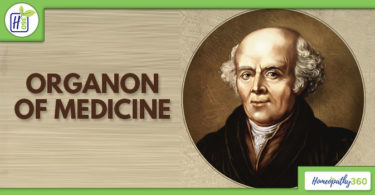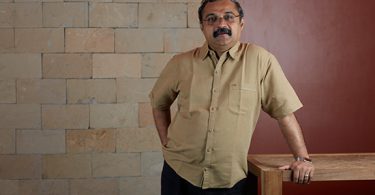Progressing beyond the strict application of the law of similar , Hahnemann attempted to explain the true nature of chronic disease , in the chronic diseases . he announced the discovery of the cause of chronic disease –the theory of miasms
Knowing that some chronic conditions were traceable to venereal diseases (syphilis or gonorrhea), he postulated that all other chronic diseases must also be related to particular diseases . He found numerous references in the medical literature to observations of chronic conditions following suppression of skin eruptions , particularly scabies (called the itch). He named this specific range of skin diseases as psora and stated that most chronic diseases had their origin in psoric infections , the remainder he postulated had their origins in gonorrhea (sychosis)or syphilis
The word miasm was coined by Hahnemann from the Greek word ‘mianein’ meaning to pollute . He believed the miasm to be an agent that was passed down from generation to generation an hereditary mechanism acting with in the body , thus according to Hahnemann’s miasmic theory the origin of all chronic diseases may be : 1) sycotic(gonorrhea) 2) syphilitic(luetism)3) psoric . In modern times we would study the miasmic theory in terms of our knowledge of the genetic code and the existence of deoxyribonucleic acid (DNA) and ribonucleic acid (RNA)which we now know play a major part in hereditary characteristics . Many physicians rejected Hahnemann’s theory claiming that his ideas were purely empirical and bore no relation to homoeopathy , however the concept of miasms has seen broadened to include any illness that although apparently cleared by treatment leaves a residual effect which may manifest itself in a chronic condition . In the chronic diseases Hahnemann stated according to all investigations , only three chronic miasms are found the diseases caused by which manifest themselves through local symptoms and from which most , if not all the chronic diseases originate namely 1) syphilis ( which are called venerel chronic disease ) 2). Sycosis (fig wart diseases ) 3) psora, (the chronic disease which lies at the foundation of the eruption of itch(cabbies) . the latte is the most important , psora is the oldest miasmatic chronic disease known to us . it was a continually repeated fact that the non venereal chronic disease , after being time and again removed homoeopathically always returned in a more or less varied form with new symptoms or repeated annually . This gave me the first clue that the homoeopathic physician has not only to combat the well defined chronic disease , but that he has always to encounter only some separate fragment or a more deep seated original disease . Hahnemann listed his so called ‘antipsoric remedy ‘ and detailed the treatment .
He stressed that it was a fundamental rule in the treatment of chronic diseases to let action of the remedy come to an undisturbed conclusion so long as it visibly advances the cure . this progress must not be disturbed by a new remedy , according to the organon , “ the only exception is the immediate repetition of the same medicine “
The forty eight new anti-psoric homoeopathic medicines introduced by Hahnemann in the chronic diseases , including alumina , arsenic album , calcarea carbonica , custicum , cuprum met , allicum , graphites , hepar sulph , natrum mur , phosphorus , sepia , silicea , and sulphur are among the most frequently prescribed homoeopathic remedies today . Samuel Hahnemann’s three great works , which are essential reading for all homoeopaths are still the basic source of reference used today . Dr. Pembertan Dudley in his preface (1896)to the chronic diseases wrote an opt comment on Hahnemann’s contribution ; whatever estimate science may finally place upon the discovery and doctrines of Hahnemann and whatever measure of confidence in his therapeutic belief of posterity may accord or withhold , his personality and work have achieved a position which must render them perpetually historic . His teachings have been so inter woven with the entire fabric of medical progress that neither wear and tear of time , nor the dissections of criticism will ever be able to dissociate them . Hahnemann’s techings are destined , inevitably to run through the texture of every page in the future analysis of medicine . in the development of the therapeutic art , Hahnemann’s position is more than merely transitional . He proclaims both an epoch and era , there presents both discovery and progress .
Hahnemann’s three miasms :
Having developed the theory of homoeopathy , Hahnemann went to identify three basic miasms responsible for chronic disease , looking at these three miasms today , we can see that they correspond very closely to the three dimensions of love , as well as to Freud’s three stages of psychosexual development .
Hahnemann attributed the first miasm , psora to scabies or the itch . it represents lack , destitution , cold and hunger but also the sufferings of the “I” Freud’s oral stage . The second miasm sycosis was attributed to gonorrhea and represends excess power and lack of control as well as the “we” and the anal stage of Freud .
The third miasm , syphilis represents destruction , jealousy , murder and Freud’s Oedipus complex plus progression to the “one” –the third dimension of love . A person’s psychological development is influenced by these three forces from the moment of his conception when the gametes of the father fuse with those of the mother right up until the end of life .
- psora : oral stage , infinite love mother /child egoism
- sycosis : anal stage
- syphilis : one Oedipus infinite love altruison
Back to Hahnemann’s miasms :
The three main miasmatic trends , as Hahnemann called chronic disease are transmitted hereditarily and can be identified from the patients personal and family history . allergies eczema and nutritional problems tend towards psora with the forsaken feelings of psorinum or the desire of tuberculinum to leave its body and escape this cruel world . sycosis represents the tumor “diathisis” with carcinosis being the main remedy families who keep their secret very closely guarded and never reveal it to any one . there are some things you just don’t talk about , these are people who never express their feelings in order to avoid offending others and finally develop cancer , which is the loss of cellular differentiation . Other sycotic conditions include hypertension , obesity and diabetes which tend towards medorrhinum with its constant anxiety about the future at the expense of the present the only thing that is real and external . Finally ,the syphilitic miasm is indicated in families that are prone to genetic deformities , circulatory diseases alcoholism and suicide . Syphilinum for example develops a sudden mania for hand washing , as though to cleanse himself after committing a crime . Should we be angry with our ancestors for the various flaws and miasms they have handed down to us ? or “like cures like” so we chose to be born into a family whose level of vibration corresponded with our own . We knew this would enable us to confront those very issues and problems we still needed to resolve in our journey towards infinite love . even if they make life seem unfair or cruel , it is these problems that show us the way . the situation is slightly different in the case of adopted children whose origins are unknown , such children often need magnesia carbonica as they experience dreams of being “forced to marry against their will”. In most western societies , marriage is considered such an intimate and personal affair that the idea of it as a convenient arrangement between the families of two people who don’t even know each other seems strange and yet arranged have always axisted and still take place through out the world the same kind of scenario occurs in adoption when a child is suddenly handed over to two people he doe’s not know and with whom he has none of the close bonds which are built during those nine months in the womb
Another clinical case gave me much insight into cases of adoption . as a pediatrician concerned with abandoned “problem” children I came across the case of a child born with herpetic encephalitis , since this disease usually causes permanent damage , nobody wanted to adopt the child . However the baby was developing normally , so I discussed his case with a couple who had been trying to adopt for several years (while adoption is a very difficult procedure for those wanting so-called “normal” children ,it is usually much quicker when the couple is willing to adopt child with a disability ). The couple hesitated for a while then when the baby reached nine months decided to adopt . It was love at first sight between the adoptive father and the baby . As soon as the new family arrived home the baby crawled through the apartment into the study and pointed to a book on the shelf . the following week the father had to go away on business for a few days , on his return , the baby once again led him into the study and pointed by Dostoevsky –the only Russian book that the couple owned . when I asked the father if there was any Russian blood in his family , his face lit up as he exclaimed “my grand father was a Russian surgeon in exile during the revolution . He got my Persian grand mother pregnant , then disappeared without a trace , totally abandoning them both” . perhaps this time it was the grand father’s turn to be abandoned and then rescued by his very own offspring …
So the law of “like cures like” can also be seen to apply in cases of adoption , when treating an adopted child we should never fail to inquire about its adoptive parents family history .





